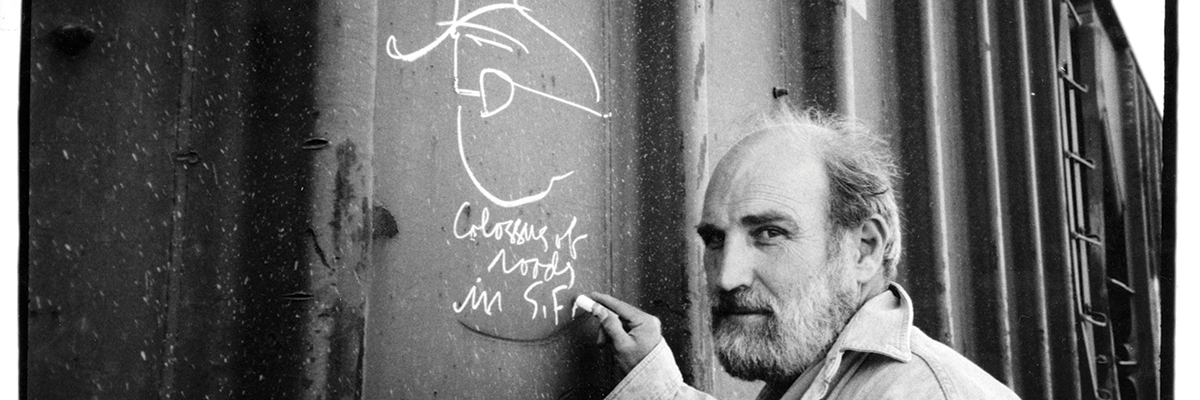The Thinkers
2014 - Sculpture (Sculpture)
Adriana Lara
Lara uses things readily at hand to create objects and situations that interrogate the processes of art and the spectrum of roles that art and artists play in society. To these ends, she has used furniture, projections, photographs, clothing, and even people as her materials. A reflection on how the production of meaning itself takes place in the manufacturing of things is embodied in wooden hand chairs, a crafty Indonesian version of the iconic Pedro Friedeberg 1960s Pop design. Facing one another and pulling a tight thread between their fingers as if playing a game, The Thinkers (2014) is a magnified version of the practice of weaving, with the hand as the primary technological tool. Part readymade, part joke, and part examination of the role of the artist, the significance of this simple gesture hinges on the feeling of discontinuity, the shift in consciousness, that it provokes.
Adriana Lara is fascinated by how a single thing (an object, a photograph, a song, a text) can be transformed into a work of art. This process does not relate to formal alteration or the application of expert skill, but rather to a simple act of articulation. Rather than relying on the physical creation of something new, this becomes that (namely, art) because the artist declares it to be so. This special kind of alchemy imbues all of Lara’s objects with a restless ambiguity. Much like her art, Lara is something of a shape-shifter herself, moving between the roles of artist, curator, musician, or writer whenever it suits her needs.
Colors:
Related works sharing similar palette
» see more

© » BROOKLYN STREET ART
buZ Blurr, One Telling of the “Origin Story” at Straat Museum Amsterdam | Brooklyn Street Art BROOKLYN STREET ART LOVES YOU MORE EVERY DAY In the shifting culturescapes of urban contemporary art, STRAAT Museum’s latest exhibition, “Moniker: An Origin Story,” emerges as a poignant narrative that bridges the transient heritage of hobo monikers with the vibrant pulse of today’s street art scene...

© » KADIST
Chen Shaoxiong
2007After engaging primarily with video and photography for more than a decade, Chen turned to painting to explore the issue of urban change and memories—both personal and collective...

© » ARTS EQUATOR
Weekly Picks: Singapore (1 - 7 April 2019) | ArtsEquator Thinking and Talking about Arts and Culture in Southeast Asia Weekly To Do April 1, 2019 SOTA Open House 2019, School of the Arts, 6 April, 9am – 4pm Unleash your child’s creative potential at SOTA Open House 2019 Want to learn more about the arts-enhanced education in SOTA? Join us on Apr 6, 2019 (Saturday), 9am to 4pm, at the SOTA Open House for tours of our vibrant campus, talks with teachers and students, and hands-on demonstrations...
Related artist(s) to: Adriana Lara » Gabriel Kuri, » Marcelo Cidade, » Mariana Castillo Deball, » Mateo López, » Nicolás Paris, » Simon Fujiwara, » Wilfredo Prieto, » Adrián Villar Rojas, » Amalia Pica, » Carolina Caycedo
» see more

© » KADIST
Amalia Pica
2013Memorial for intersections #2 (2013) is a minimalist, black metallic structure that contains the brightly colored translucent circles, triangles, rectangles, and squares that originally were presented in Pica’s performance work A ? B ? C (2013)...

© » KADIST
Mariana Castillo Deball
2015Taking archaeology as her departure point to examine the trajectories of replicated and displaced objects, “Who will measure the space, who will tell me the time?” was produced in Oaxaca for her exhibition of the same title at the Contemporary Museum of Oaxaca (MACO) in 2015...

© » KADIST
Mateo Lopez
2012With Roca Carbón (Charcoal Rock, 2012) and Roca Grafito ( Graphite Rock , 2012), López plays with our relationship to inert and unremarkable objects such as rocks...

© » KADIST
Adrian Villar Rojas
2010The two drawings in the Kadist Collection are part of a larger series entitled Las Mariposas Eternas (The Eternal Butterflies)...
Related works found in the same semantic group
» see more

© » KADIST
Shilpa Gupta
2014These hand drawn maps are part of an ongoing series begun in 2008 in which Gupta asks ordinary people to sketch outlines of their home countries by memory...




